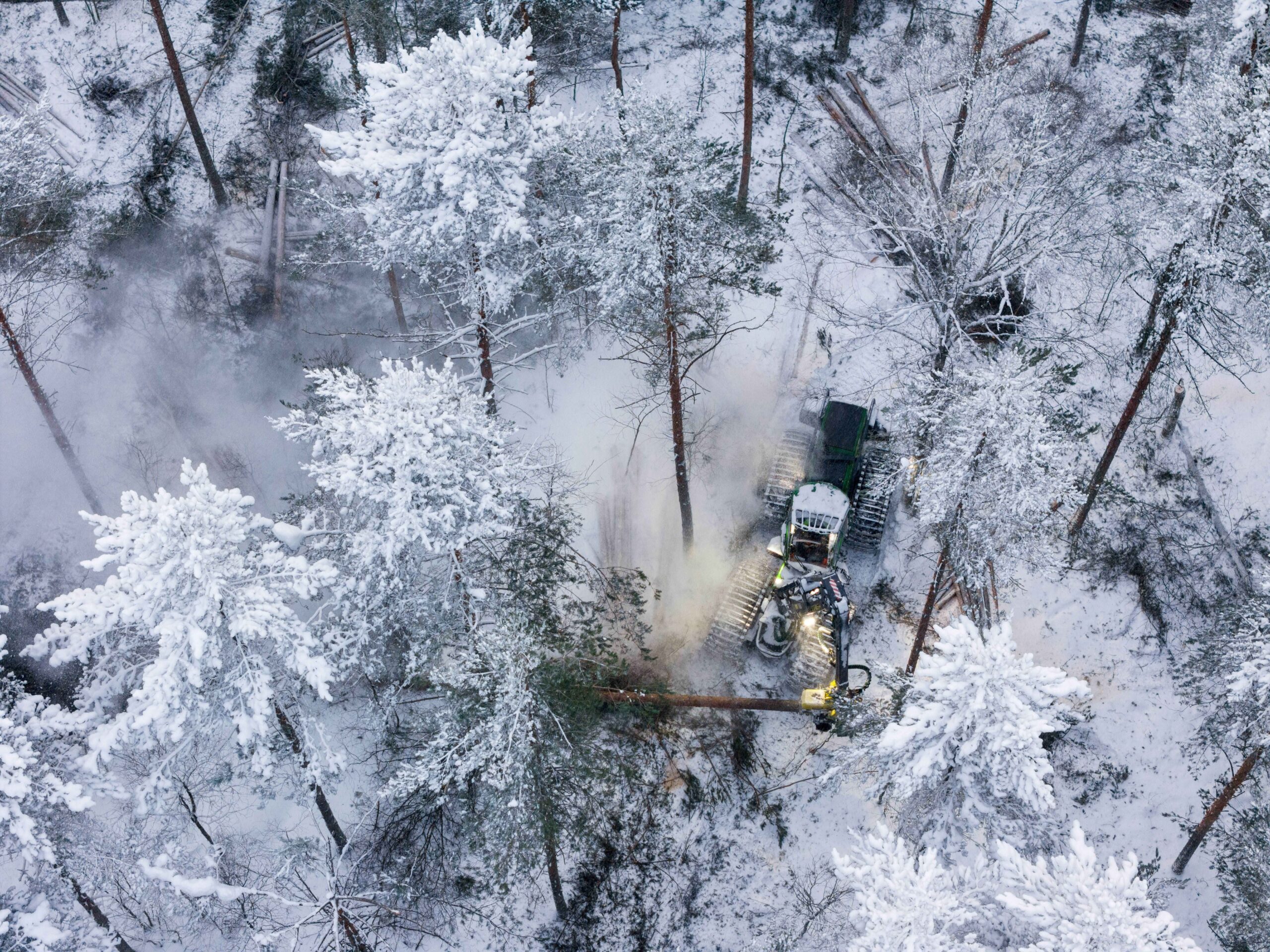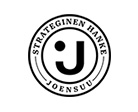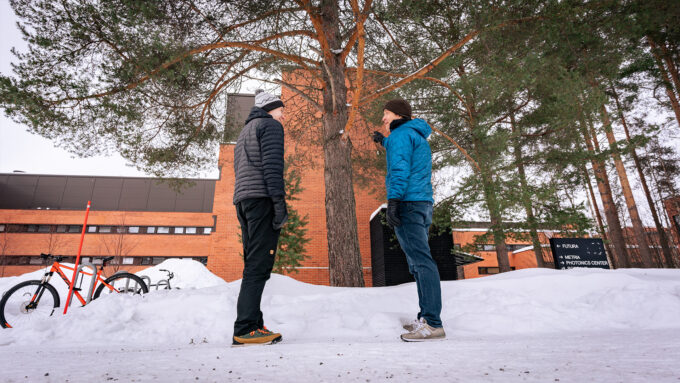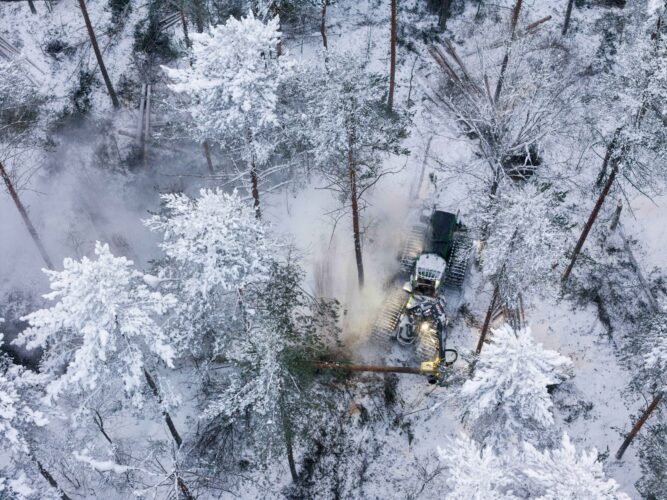Canadian forestry and bioenergy expert Jamie Stephen visited Joensuu in mid-February to shoot material for a YouTube video series that presents different forms of sustainable bioeconomy in Europe. In Joensuu, the focus was especially on sustainable forestry and the district heating system in the area.
– Joensuu’s climate is cooler than, for example, Ottawa or Edmonton, where heating is mainly done with natural gas. The heating system in Joensuu is based on the use of wood-based materials and supports sustainable forestry, which we can learn from in Canada, says Stephen.
I knew that Joensuu is the forest capital of Europe and one of the world’s leading cities in sustainable forestry and the utilization of wood-based materials.
In addition to Joensuu, the video series was filmed in Sweden, France and Great Britain. Joensuu was chosen as a filming location for several reasons.
– I knew that Joensuu is the forest capital of Europe and one of the world’s leading cities in sustainable forestry and the utilization of wood-based materials. In addition, there is an extensive and functional district heating system here and related know-how, which can inspire others to succeed, Stephen describes.
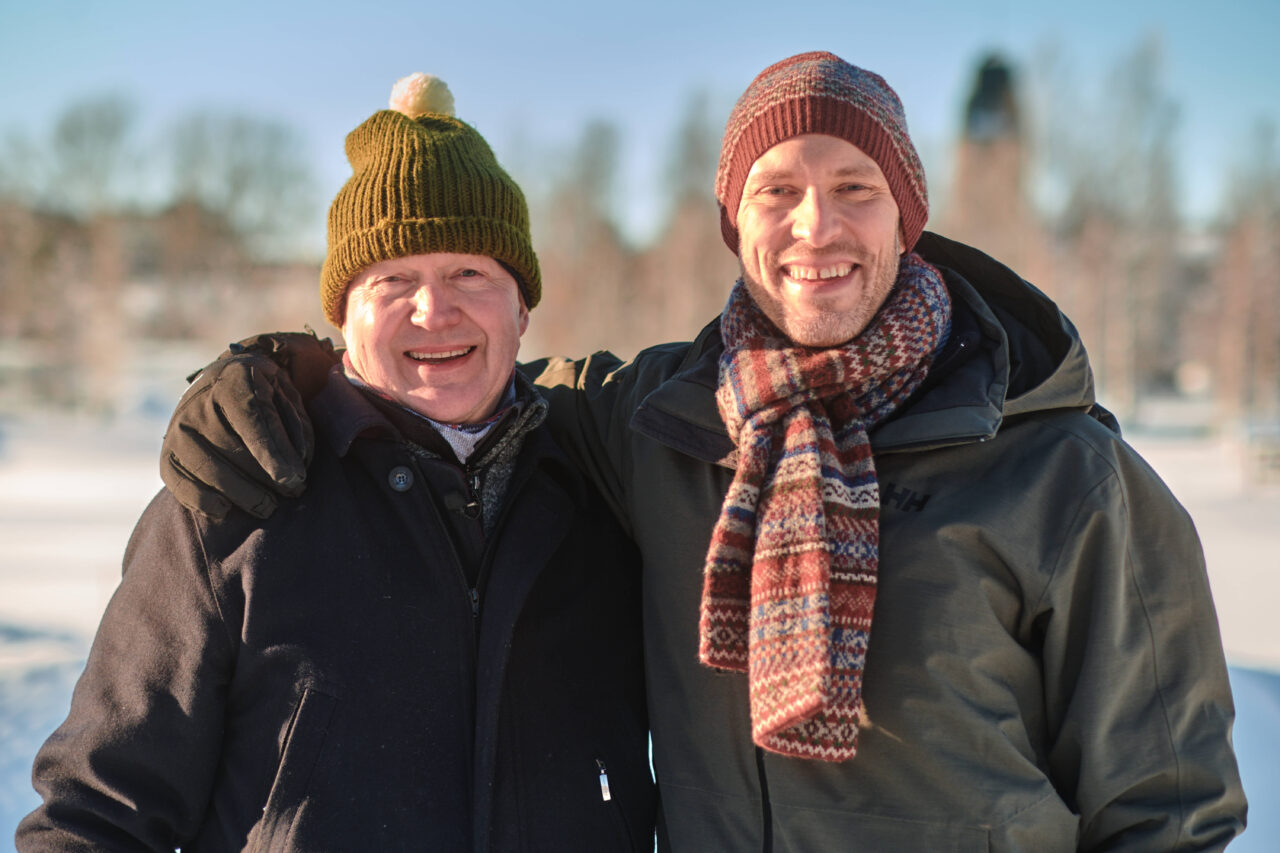
Finns have a unique relationship with forests
Stephen has worked in bioenergy and forestry for more than 20 years, and acted as a promoter of Finnish energy solutions in his home country.
– With my research, I have tried to convince Canadian cities that the use of sustainable bioenergy is a viable way to reduce carbon dioxide emissions and a way to guide urban heating and forestry in a more responsible direction.
According to Stephen, in Canada it is often thought that heat can be produced with either electricity or natural gas.
– The purpose of the video shot in Joensuu is to show that heating solutions based on bioenergy can also prove to work in conditions similar to Canada.
In Canada it is often thought that heat can be produced with either electricity or natural gas.
– Canada is a cold country, just like Finland. We also have a lot of forest area and the forest industry is a significant industry, he describes the similarities between the countries.
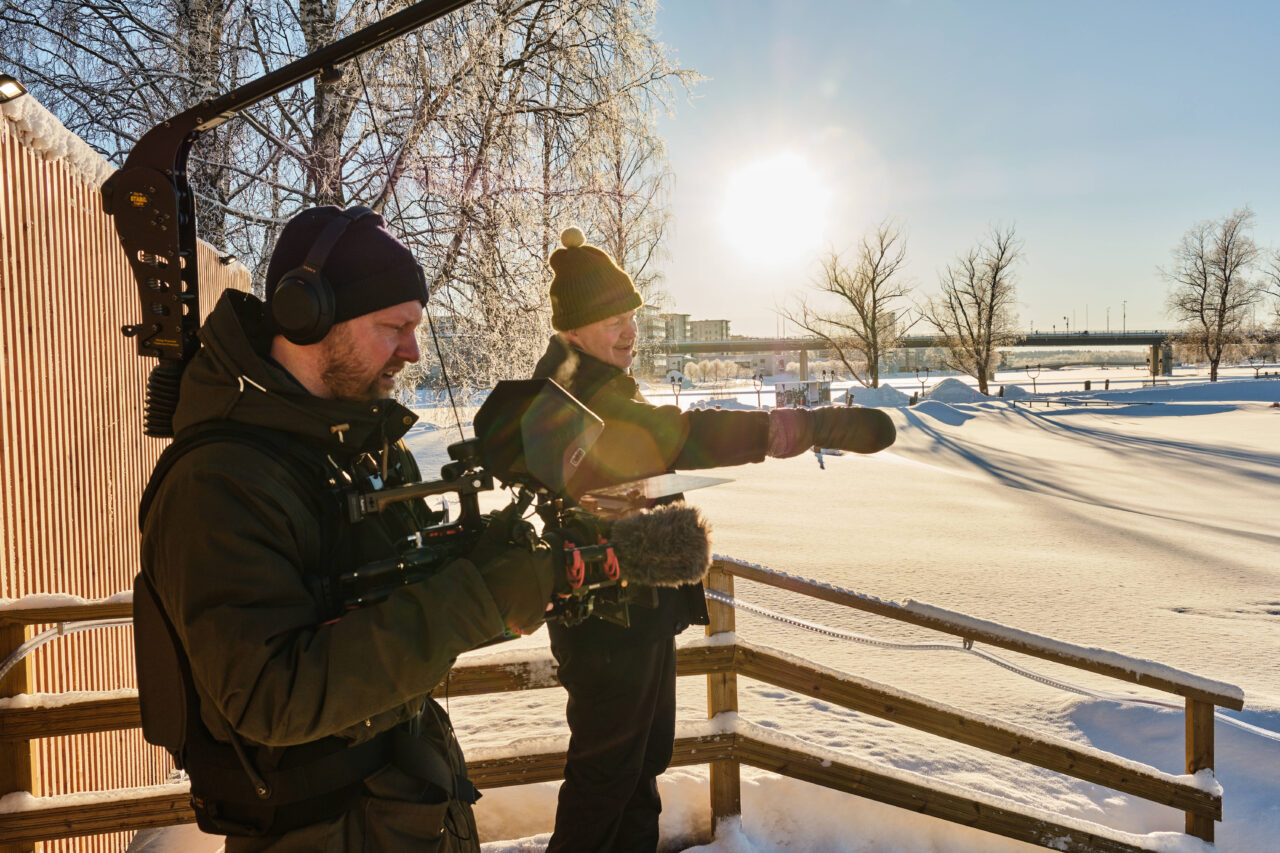
However, Canadians and Finns have a different relationship with forests. Stephen says that he has noticed that many families in Finland have their own forest, which has a long tradition of caring for it.
– There is a relationship with the land and the forest that transcends generations, even if you live in a city.
– Canada, on the other hand, is a really urbanized country, the majority of whose citizens live a very urban life.
– Although Canada’s forest area is gigantic, it can be difficult for individuals to form a relationship with the forest, Stephen states.
Although Canada’s forest area is gigantic, it can be difficult for individuals to form a relationship with the forest.
Stephen cites the structure of forest ownership as one of the reasons for this. In Canada, 94 percent of forests are publicly owned.
– Getting into the forest can be difficult, and people enter nature mostly in national parks, which is why the forest is very far from people’s everyday life.
Forests are not being thinned in Canada
According to Stephen, there are also huge differences between Finland and Canada in the use of forests.
– Finland has successfully created a system, where forests in different stages of growth and different wood-based materials have their own place.
– For example, heat production is connected to the Finnish forestry system, but in Canada these are separate areas. One significant difference is related to thinning felling, which is actively done in Finnish economic forests.
Through thinning, trees in good condition get more room to grow and, for example, sick or damaged trees are removed and utilized, for example, in energy production.
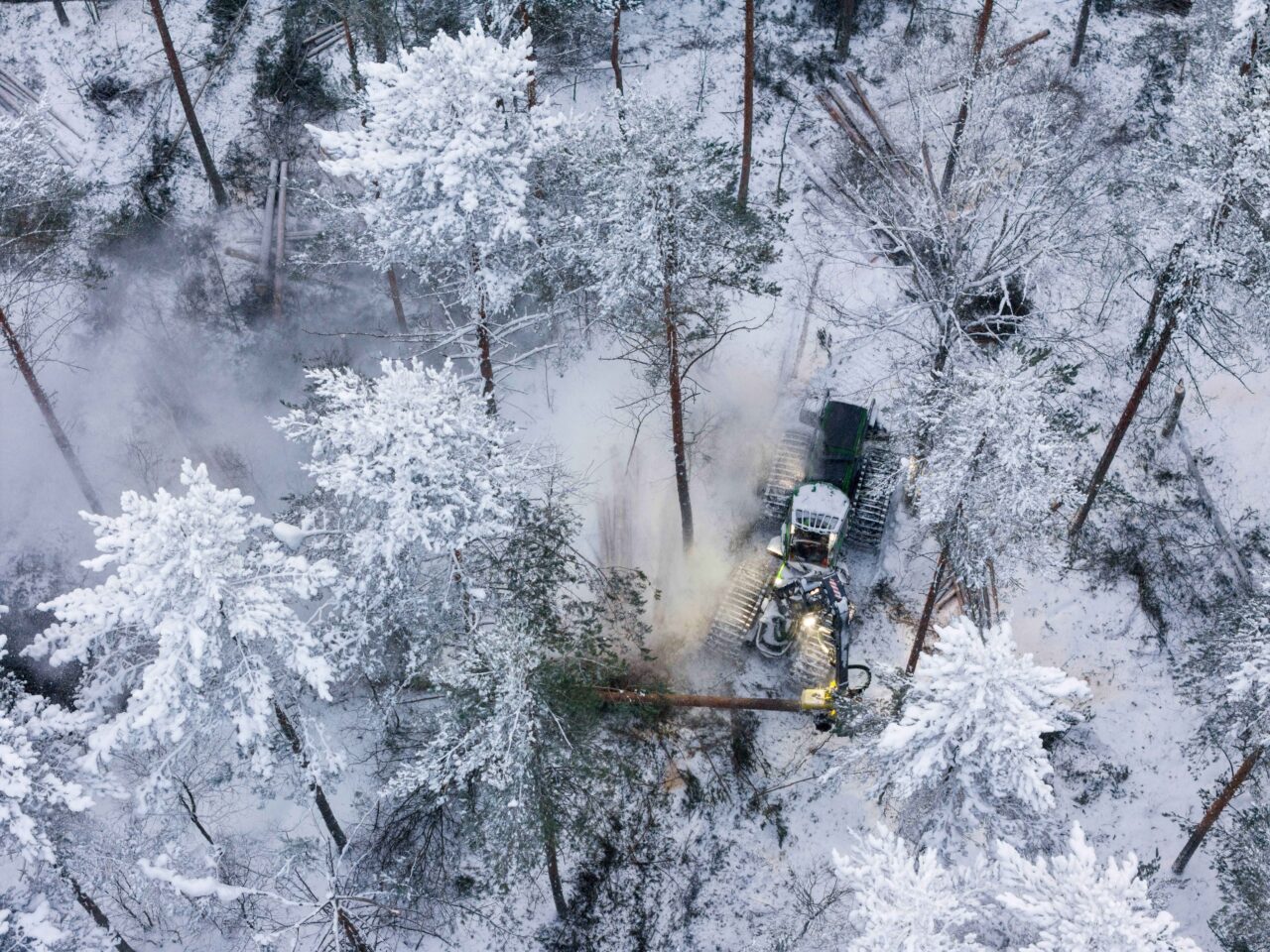
– In Canada, thinning is hardly done, and no financial resources are put into the management of publicly owned forests at different stages of forest growth, Stephen says.
According to him, however, by thinning forests, it would be possible to significantly reduce, for example, the risk of forest fires.
– Most of Canada’s forests are natural and therefore susceptible to forest fires, which, for example, destroyed large forest areas in 2023. Forest fires create carbon dioxide emissions and huge amounts of carbon sinks are lost in a short time, Stephen explains.
Forests will change anyway with climate change. This is a really big difference compared to other energy sources.
– Thanks to bioenergy in Finland, it has been possible to create a profitable market for wood material obtained from thinnings.
Thanks to this, the forests remain fresh and are not destroyed so easily as a result of fires. There is no such active forest management model in Canada.
Stephen considers the forest to be an exceptional source of energy because it is a living organism that changes over the years.
–We should work together with the forest and nature and learn to understand what works and what doesn’t. Forests will change anyway with climate change. This is a really big difference compared to other energy sources, he states.
Forestry is renewed through cooperation
According to Stephen, the opportunities for Finnish technologies and practical implementation know-how in the Canadian export market are enormous.
– For example, there are very few companies and engineers in Canada that implement heating systems. In Finland, on the other hand, there are significant technologies and expert teams in the field, with whom we are already working in large-scale collaborative projects, he says.
Cooperation between municipalities and cities could be one way to share know-how and get Finnish solutions to the Canadian market.
Stephen especially emphasizes the importance of communication in sharing the successes of different areas.
–Reducing emissions and increasing carbon sinks is our common goal and duty, but working solutions are still not sufficiently communicated.
–It is not effuicient selling a single product to a Canadian, but rather a complete solution. Networks, active forest management and technologies are strengths that should be communicated as a whole, says Stephen.

